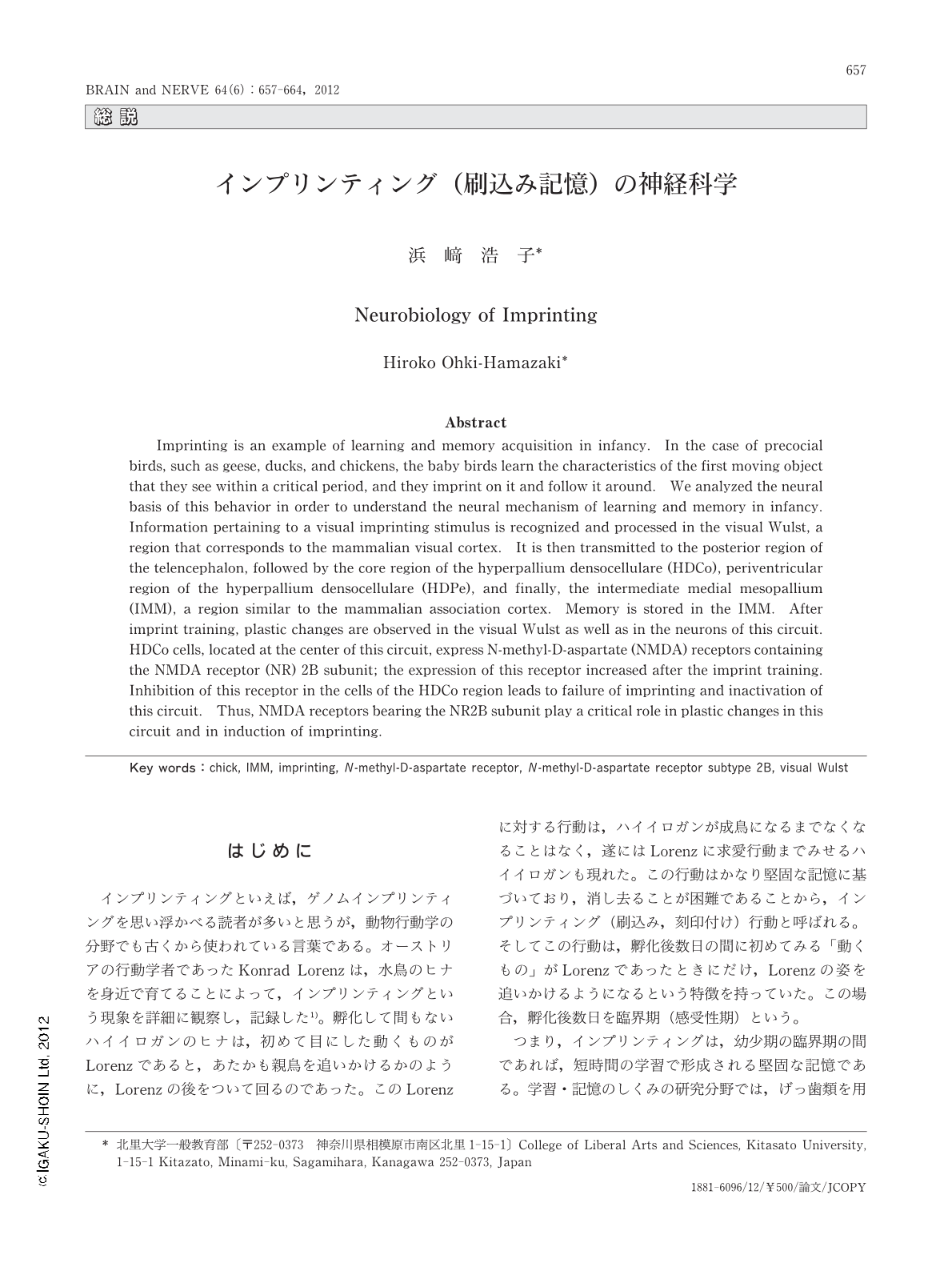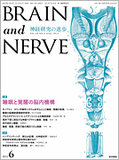Japanese
English
- 有料閲覧
- Abstract 文献概要
- 1ページ目 Look Inside
- 参考文献 Reference
はじめに
インプリンティングといえば,ゲノムインプリンティングを思い浮かべる読者が多いと思うが,動物行動学の分野でも古くから使われている言葉である。オーストリアの行動学者であったKonrad Lorenzは,水鳥のヒナを身近で育てることによって,インプリンティングという現象を詳細に観察し,記録した1)。孵化して間もないハイイロガンのヒナは,初めて目にした動くものがLorenzであると,あたかも親鳥を追いかけるかのように,Lorenzの後をついて回るのであった。このLorenzに対する行動は,ハイイロガンが成鳥になるまでなくなることはなく,遂にはLorenzに求愛行動までみせるハイイロガンも現れた。この行動はかなり堅固な記憶に基づいており,消し去ることが困難であることから,インプリンティング(刷込み,刻印付け)行動と呼ばれる。そしてこの行動は,孵化後数日の間に初めてみる「動くもの」がLorenzであったときにだけ,Lorenzの姿を追いかけるようになるという特徴を持っていた。この場合,孵化後数日を臨界期(感受性期)という。
つまり,インプリンティングは,幼少期の臨界期の間であれば,短時間の学習で形成される堅固な記憶である。学習・記憶のしくみの研究分野では,げっ歯類を用いたMorris水迷路試験やY字型・放射状迷路試験,餌探索試験,新奇物質探索試験,あるいは受動回避試験などが認知系の記憶,さらに恐怖条件づけ文脈学習試験などが認知系と情動系の記憶を研究するためによく用いられている。これらはしかし,成獣や少なくとも成獣に近い動物の記憶を研究するために使われている。げっ歯類で幼少期の記憶をターゲットとしたものには,嗅覚記憶があるが,これは嗅覚の発達した動物においてみられるものであり,げっ歯類に比べて知覚を嗅覚にさほど依存していないヒトに当てはまるとは限らない。このように考えてみると,霊長類を用いた大掛かりな研究以外には,幼少期の記憶のモデルとなるものは簡単には見当たらない。その中で,鳥類のみせるインプリンティングは,幼弱期の記憶学習行動のメカニズムを知るうえでのよいモデルとなっており,われわれはこのモデルを用いて研究を行っている。
Abstract
Imprinting is an example of learning and memory acquisition in infancy. In the case of precocial birds,such as geese,ducks,and chickens,the baby birds learn the characteristics of the first moving object that they see within a critical period,and they imprint on it and follow it around. We analyzed the neural basis of this behavior in order to understand the neural mechanism of learning and memory in infancy. Information pertaining to a visual imprinting stimulus is recognized and processed in the visual Wulst,a region that corresponds to the mammalian visual cortex. It is then transmitted to the posterior region of the telencephalon,followed by the core region of the hyperpallium densocellulare (HDCo),periventricular region of the hyperpallium densocellulare (HDPe),and finally,the intermediate medial mesopallium (IMM),a region similar to the mammalian association cortex. Memory is stored in the IMM. After imprint training,plastic changes are observed in the visual Wulst as well as in the neurons of this circuit. HDCo cells,located at the center of this circuit,express N-methyl-D-aspartate (NMDA) receptors containing the NMDA receptor (NR) 2B subunit; the expression of this receptor increased after the imprint training. Inhibition of this receptor in the cells of the HDCo region leads to failure of imprinting and inactivation of this circuit. Thus,NMDA receptors bearing the NR2B subunit play a critical role in plastic changes in this circuit and in induction of imprinting.

Copyright © 2012, Igaku-Shoin Ltd. All rights reserved.


